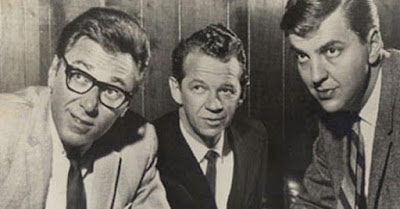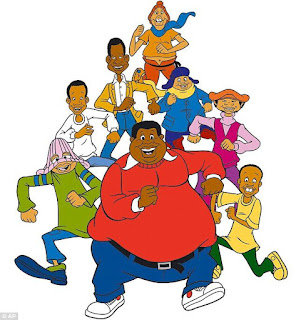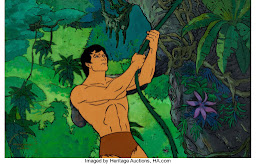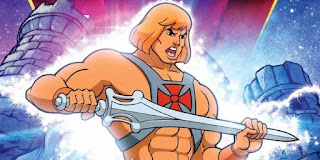The studio began in 1963 with three guys: Lou Scheimer, Hal Sutherland and Norm Prescott—and yes, the name is indeed a melding of film and animation, because they worked on both. Scheimer and Sutherland went back in television animation as far as 1957, and Prescott was a former disc jockey, if you can believe that, before getting into movie production.
In the company‘s early years, they did commercials, an Oz movie and some series pitches that never got far. Then DC Comics came to them wanting to adapt Superman and other heroes of theirs for animation, beginning in 1966. This led to series featuring Archie and Sabrina in 1970.
I may have been a little too dismissive of these early DC cartoons in my WB post. I rewatched them for this post; if nothing else, they’re better than the early Marvel superhero cartoons from the same period (excluding Spider-Man) that can just barely be called animation.
In 1969, I Spy star and stand-up comedian Bill Cosby co-wrote and did voice work for an animated TV special for NBC called Hey Hey Hey, It’s Fat Albert, directed by Ken Mundie. Fat Albert was a character from Cosby’s stand-up routine. The other members of his gang were created by former Disney animator Amby Paliwoda. Music was by Herbie Hancock.
NBC had expressed interest in developing the characters in an animated series but according to legend, they rejected it for being too educational. Cosby hooked up with Filmation and they took it to CBS. Fat Albert and the Cosby Kids debuted in 1972. Randy Hollar and Michelle McKinney were the animators who designed the look of the “Cosby Kids.”
Cosby may be in disgrace now, but he did so much that was good in providing television with positive black characters, and this show has to rank high among his efforts. He must not be forgotten for that, especially these days.
In 1979 there was a reboot which also featured unrelated shorts around a superhero character, the Brown Hornet. I may have started watching around then; Fat Albert went into syndication by 1984, so I was watching by then for sure. I can’t say for certain which of the lessons the show tried to teach helped me in real life; I can say they went about doing it in a slightly less ham-fisted (and far more entertaining) way than other shows.
Filmation, like other animation studios, did adaptations of live-action TV shows. Their lineup included The Brady Kids, The New Adventures of Gilligan (and the spin-off Gilligan’s Planet), My Favorite Martians, and of course, Star Trek: The Animated Series, which I’ve talked about before.
Filmation made a Shazam! live-action series, based on the DC hero Captain Marvel, in 1974; I’ve talked about this too. It originally starred Jackson Bostwick, who was later replaced with John Davey. An animated version followed in 1981. Shazam! was often paired with another live-action hero show, The Secrets of Isis, starring Joanna Cameron as a science teacher who uses an ancient Egyptian medallion to turn her into the reincarnation of the goddess Isis. It aired months before Wonder Woman—and it, too, got an animated version later.
I dug these shows; in fact I really liked Filmation’s forays into live-action, like Jason of Star Command and the segments in The Kid Super Power Hour. I probably liked them more than the Sid and Marty Krofft shows, or at least, I have better memories of them.
In 1976, Filmation made the first of several series based on Tarzan. They paired his episodes with Batman, Zorro, and the Lone Ranger, but in 1978 a show called Tarzan and the Super Seven introduced some new hero characters in segments of their own. I really got into this version of Tarzan; might’ve been my first exposure to the character. When he wasn’t doing his vine-swinging and jungle-calling, I remember he swam a lot.
Then came 1982, the year Mattel released a new line of action figures called “Masters of the Universe,” featuring a Conan-like warrior named He-Man. (The Conan rights-holders actually sued Mattel, crying copyright infringement, but Mattel won.) They were made to compete with the Star Wars figures. A comic book tie-in was originally planned, but Toys “R” Us balked, saying five-year-olds didn’t read, so Mattel went the animation route, and they came to Filmation.
He-Man and the Masters of the Universe debuted a year later, as an afterschool show—the first syndicated series based on a toy (but far from the last!). I liked it; didn’t love it. For one thing, it had a needless comedy relief character; a pint-sized magic gremlin of some sort. For another, it was Filmation, which meant the animation was stiff and repetitive at times. Every now and then, though, it had its moments. In 1985 came the spin-off She-Ra, along with a holiday special and a theatrical feature film.
None of it convinced me to buy the toys. I was a rare kid in that action figures never interested me. I don’t recall ever begging my parents for a Millennium Falcon model or an Incredible Hulk action figure or a Castle Greyskull play set, though I’d see the commercials and spot them in my Sears Christmas catalog. Had lots of other toys, though. Can’t explain it.
And now He-Man’s trying to make a comeback, in two different incarnations, one overseen by Kevin Smith, of all people.
Filmation parent company Westinghouse Electric sold the studio in 1989. The last trace of it was a feature film, Happily Ever After (a Snow White story), released four years later.
All things considered, Filmation did alright. They had a number of valuable intellectual properties from other sources that they turned into successful cartoons in its day. Even if the animation doesn’t completely hold up in comparison to that from other studios, the characters remain beloved.
 |
| L-R: Norm Prescott, Hal Sutherland, Lou Scheimer |








No comments:
Post a Comment
Note: Only a member of this blog may post a comment.